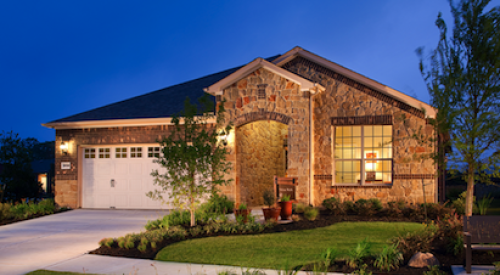Tight margins, impact fees, land costs, and buyer expectations conspire to make entry-level homes a tough code to crack. In House Review, we present design solutions that are approachable for the buyer and worthwhile for the builder. Designer Larry Garnett of Larry Garnett Designs, in Glen Rose, Texas, heads Professional Builder’s House Review design team. “There’s a huge need everywhere for entry-level homes,” he says. In addition to land costs, impact fees can run 15 to 20 percent of a starter home’s cost, depending on the region. “Cities keep crying for entry-level housing,” he adds, “but the cost for getting into an existing infrastructure needs to be on a sliding scale.” (Image: Unsplash/Pixabay)
“In Denver, lots are 25 to 30 percent of the cost of a house,” says John Guilliams, design director and partner at KGA Studio, in Louisville, Colo. (East and West Coast readers: Sounds like a bargain, doesn’t it?) Guilliams cites Habitat for Humanity’s model as one that builders can learn from: “If you strip it down and use sensible finishes instead of ritz and glitz, you can build a more price-sensitive product.” Guilliams points to sacrifices that first-timers are willing to make, such as a one-car garage, tandem two-car garages, and being close to, but not in, the center of an urban core. Build close to transit (“within a 20-minute Uber ride”) and provide easy access to their favorite amenities, he advises.
Scott Laurie, president of The Olson Company, a builder-developer in Southern California, says that creative land planning is essential for building entry-level homes. “I’d rather build a single-family detached house, but I can’t right now, so my portfolio has more attached housing at the moment,” Laurie says. He works with local municipalities to get density bonuses, subsidies, and mitigations.
Buyer expectations are another hot button with starter homes. Angela Harris, president of Trio Environments, in Denver, calls it The Apartment Effect, where first-timers coming from well-appointed rentals want a similar level of design. How to deliver niceties at reasonable margins? “Leverage your design partners and pull from different manufacturers to come up with great options packages for lighting, plumbing fixtures, and finishes,” she advises.
Speaking of expectations, “We’ve gotten spoiled in this market,” Garnett says. “Why should you fool with something that you don’t get much profit on? At the risk of sounding idealistic, if we don’t pay attention to the starter-home shortage, we’re failing to create buyers. And if we don’t build homes for Baby Boomers to downsize to, [they’ll] have no place to go.”
We’ll be thinking a good deal about entry-level homes this year. Have you built houses that fill this pressing need? We’d love to know about them.













